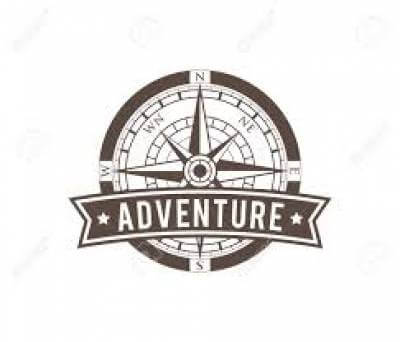RUBY VALLEY TREK
The Ruby Valley trek is one of the best-kept trekking secrets in central Nepal! This hidden valley trail, an amazing view can be seen from 3,850 meters from Pangsang pass. Ruby Valley trek also offers an authentic cultural experience of several ethnicities of the region Like; Gurung, Tamang, Ghale, and Kami.
The village's experience, the beautiful farm terraces, and each day lives of the local people in the hills of the Mountains. The Ruby Valley trek starts after driving from Kathmandu to Syabrubensi. The trek passes through foothills and lowland farm terraces to ethnic Tamang villages atGatlang, which used to be on the ancient salt trade route between Nepal and Tibet. Along with the route, the trek offers amazing close-up views of Mt. Ganesh Himal, Mt. Langtang, BouddhaHimal, Hiunchuli, and other High Himalaya Peaks.
The highest altitude on our trek is the Pangsang pass at 3850 meters and it is one of the finest viewpoints on tour trip. This trek is a homestay trek, meaning we will get an opportunity to interact with local people. Homestays also allow guests to discover villages, ethnic groups, distinct cultures, Local languages, and lifestyles. Our homestay and trek will also help with the economic growth of the area. This treks also comparatively less expensive, making it a more affordable option for many trekkers. Ruby Valley trek always demands a spirit of adventure, following narrow winding trails to summit passes and Himalayas. For the more adventurous there are also passes, lakes, High Himalaya passes, and peak climbing.
ITINERARY
Day 1 : Arrival at Kathmandu & transfer to hotel (1,350m)
Upon arrival at Kathmandu Tribhuvan International Airport you will be met by a Sherpa Expedition & Trekking representative, and taken to your hotel. After checking in at the hotel, you will be briefed on what to expect on your trek to Ruby Valley.
Day 2 : Drive from Kathmandu to Syabrubesi (1,460m) uration: 6-7 hours.
Today we will start our eight to nine hour drive to Ruby Valley trek by driving towards Syabrubesi, which will give you an opportunity to enjoy the vast array of landscapes and views of distant mountains. We will then come to the Langtang and Trishuli rivers before reaching Syabrubesi where we will stay the night in a hotel.
Day 3 : Trek from Syabrubesi to Gatlang (2,240m) Duration: 5-6 hours.
Today we hit the trail for five to six hours and head to the distinct culturally rich village of Gatlang. Along the trail, we will meet the very friendly and warm Gurung people. On arrival at Gatling you will notice they are mostly farmers and have sculptured terraces into the hillside to grow crops such as potatoes and wheat. Gatlang is situated on a hillside. We will stay here the night in a guest house.
Day 4 : Trek from Gatlang to Somdang (3,271m) Duration: 5-6 hours.
Today we have a five-hour trek ahead of us with some fantastic views of the Langtang Himal Range, Ganesh Himal, Paldor Peak (5896m), and other surrounding snow-covered mountains. We will stay overnight in a guest house at Somdang.
Day 5 : Acclimatization Day at Somdang
Today we will trek to the lead and zinc Lari mine from where we have views of Paldor Peak and other mountains in the Ganesh Himal Range. It is important and recommended by medical professionals, to stay active during your time acclimatizing. Tonight we will again stay at Somdang.
Day 6 : Trek from Somdang to Pangsang Bhanjyang Pass (3850m) & to Tipling (2,200m) Duration: 7-8 hours.
This morning we have a seven-hour trek to Pangsang Kharka which is southwest of Somdang Village and offers magnificent panoramic views over the broad landscape in all directions, including the towering peaks of Manaslu and the Ganesh Himal Range. We will camp at Tipling that also affords some spectacular scenery.
Day 7 : Trek from Tipling to Shertung (1,875m) Duration: 5-6 hours.
Today we begin by descending to the Adha Khola (river) and on to the villages of Shertung and Chalish that overlook the rich fertile soils and fields down in the valley. Shertung is inhabited mostly by Tamang. The name Shertung in Nepali means 'place of gold'. Tonight we will stay overnight in a lodge.
Day 8 : Trek from Shertung to Chalish Gaon (1,675m) Duration: 6-7 hours.
Today we will follow the trail for around 30 minutes to Chalish Gaon Village and then on to Tatopani therapeutic hot springs that should take another one and a half hours. We will spend a few hours relaxing in the hot water before returning to Chalish Gaon for the night.
Day 9 : Trek from Chalish Gaon to Jharlang (3,000m) Duration: 5-6 hours.
This morning we will trek for 30 minutes to Mani Danda where we have incredible views over the Ganesh Himal Ranges. The trail continues across the hills and on to Deul Danda, Gobre, Chhap Danda and Bandari villages. Tonight we stay overnight at Jharlang.
Day 10 : Trek from Jharlang to Darkha Gaun (8,50m) Duration: 6-7 hours.
Today the trail descends for two and a half hours to Jharlang Phedi past terraced fields, lush landscape and across several suspension bridges. Along the trail we will have some great views of Ankhu Khola and Chyamchyat and Ri villages. Overall, our trek today is about six to seven hours. We will stay overnight at Darkha Gaon.
Day 11 : Trek from Darkha Gaon to Dhading Besi & drive back to Kathmandu; Duration: 8-9 hours.
Our trek starts with a 45-minute walk to Darkha Phedi where we take a local jeep heading to Dhading Besi. The drive will take about three to four hours crossing the Ankhu Khola (river) as well as Kimdang Phedi, Katunje, and Jyamrung villages. On the drive, you will be able to take in the surrounding scenery. After arrival at Dhading Besi, we will take a three-hour bus trip back to Kathmandu.
Day 12 : Guided Sightseeing of the Kathmandu Valley; Duration: 4-5 hours.
Today is a day of guided sightseeing in Kathmandu Valley. We will visit Pashupatinath, regarded as the holiest Hindu temple in Nepal and a place where pilgrims worship Lord Shiva (situated on the banks of the holy Bagmati River), Bouddhanath, a Tibetan Buddhist temple also known as ‘Little Tibet’ and then on to Swayambhunath (Monkey Temple). From Swayambhunath we head to the celebrated Durbar Square, a UNESCO World Heritage-listed site that is located opposite the old royal palace. Back at your hotel, you will have time to stroll around the narrow and winding streets of Thamel and relax in one of the many cafes or bars.
Day 13 : Transfer to Tribhuwan International Airport.
Sherpa Expeditions & Trekking staff will transfer you to the airport for your final departure from Nepal. We hope that this epic trek will be firmly ingrained in your memory and will be enough to prompt you to consider your next trek with us!
SERVICES
Costs Included In Your Package
- Airport picks up and transports by private Car/Jeep.
- Two Night's hotel accommodation In Kathmandu with breakfast (3 star Hotel)
- Transportation from Kathmandu to Syafrubesi and Dhading Besi to Kathmandu via public bus.
- All standard meals 3 Meals a day (lunch, dinners & breakfast) during the trek.
- Trekking Lodge (Tea House) accommodation /Tent camp accommodation during the trek
- Government licensed holder English speaking trek leader (10 or more trekkers an assistant guide) and porter to help carry your luggage.
- Strong, helpful Sherpa porters with proper safety equipment and walking equipment, his salary, food, accommodation, and insurance (one porter for two people).
- Guides and porters provided by Sherpa Trekking & Expeditions, including their meals, insurance, salary, lodging, transportation, and other necessary equipment
- All the required permits and paper works( Langtang National park permit, TIMS etc)
- All government, local taxes, and official expenses
- Kathmandu valley sightseeing by car/Jeep
- Assistance in arranging rescue operations in case of complicated health conditions such as altitude sickness (funded by travel insurance)
- Souvenir - Sherpa Trekking & Expeditions t-shirt
- Use of sleeping bag, down jacket, duffel bag, and walking poles (if you don’t have your own, to be returned after the trip is completed).
- Sherpa Expedition and Trekking’s certificate of appreciation & completion after the successful trek
- Oxygen meter to check your pulse and oxygen saturation and heart rate twice daily (Very useful to check Altitude Mountain Sickness(AMS) symptoms) which will ensure your health during the trek.
Costs Exclude
- International airfares
- Nepal entry visa fee (easy to obtain the visa on arrival at Tribhuvan International Airport – Kathmandu). $30 USD for 15-day, $50 USD for 30 Days, and $125 USD for 90 Days visa.
- Extra night’s accommodation in Kathmandu due to early arrival or late departure or early return from the trek.
- All the alcoholic and nonalcoholic, soup, tea, coffee, hot chocolate, cocoa, mineral water, extra food, cold and hot drinks on trek ( i.e. those you choose to purchase along the way and during evenings in the tea houses)
- All desserts & sweet things like chocolate, cake, pie, pudding.
- Hot shower and battery charging at the tea houses.
- Lunch and dinner in Kathmandu
- Personal clothing and gear
- Kathmandu valley sightseeing entrance fee
- Travel insurance which has to cover emergency high-altitude rescue and evacuation (compulsory)
- Tips for guide and porters (recommended in our culture – and well deserved too!)
- Additional costs or delays caused by events beyond our control, for example, landslides, severe weather conditions, itinerary modification due to safety concerns, illness, change of government policies & strikes.
- All the costs and expenses which are not listed in "costs include" will be counted as exclusions.
EQUIPMENTS
The following information will give you some idea about what you need to bring for the trek. It is important you do not forget the essential items, as this will determine your comfort and safety on the trek. Equally important is that you do not burden yourself with unnecessary equipment on the trek.
- Sleeping Bag (Sherpa Teams will provide but need to return after completing the trip)
- Duffel Bag (Sherpa Teams will provide but need to return after completing the trip)
- Fleece jacket or pullover
- Waterproof windbreaker or windcheater
- Thermal underclothes
- Rain poncho
- Down jacket (Sherpa Teams will provide but need to return after completing the trip)
- Fleece or wool trousers
- Sun hat or scarf
- Trekking pants (two pairs)
- Mittens or woolen gloves
- Hiking socks (several pairs)
- Moisture-wicking shirts, including t-shirts
- Trekking shoes or boots with spare laces
- Flip-flops or sandals for relaxing in the evenings
- Underwear (several pairs)
- Swimsuit or swimming costume
- Sunglasses
- Headlamp or flashlight/torch
- Sleeping bag (Sherpa Teams can provide this for you)
- Trekking poles (if desired)
- Hiking backpack with a capacity of at least 40 liters
- Small lock for your backpack
- Reusable water bottles (at least two liters)
- Water purification tablets or filtration device
- Wash towel
- Basic first aid kit
Toiletries (tissues, toilet paper, moisturizer, lip balm, sunscreen, sanitary pads, hand sanitizer, nail clippers, a small mirror, toothbrush, toothpaste, glasses, contacts, etc.)
GOOD TO KNOW
Accommodation
You will be accommodated in 3-star hotels in Kathmandu. During the trek, we will be staying at lodges/ teahouses. You may find net and clean teahouses - You will be staying at a teahouse/tent in higher elevation.
Meals during the trek
In Kathmandu, your hotel includes breakfast, whereas all meals (breakfast, lunch, and dinner) will be provided during the trek. A staple food of the Ruby valley regions is potatoes, oats, buckwheat, Sherpa stew, and Tibetan bread. Sherpa’s’ started farming potatoes when the first seeds were introduced to the region in the early 90s. There is a limited choice of food at higher elevations and except many potato dishes. Potatoes are high in carbohydrates – an excellent source of energy needed at high altitudes.
Transportation
We use a private car for sightseeing and for the airport to hotel pick and drop off. We use public transportation or local buses during the trek.
Physical fitness
This can be a challenging trek where you often have to walk 6-7 hours a day. You need past experience of hiking or trekking but if you have done any kind of trekking activities then it is always a plus! We have met people from all walks of life, shapes, and sizes who have completed the trek. The only difficult part is when altitude sickness strikes and the effect that it can have on your body. Before leaving for Nepal it is good if you can prepare yourself physically by increasing your stamina and oxygen intake.
Remember – The better prepared – the more enjoyable your trek!
MAP
PHOTOS/Videos
Departures
Select a departure month
Fill out the form below and a Travel Expert will reach out to create your perfect tour.
FAQS
What is the Ruby Valley Trek?
The Ruby Valley Trek is a relatively new and off-the-beaten-path trekking route in the Ganesh Himal region of Nepal. It takes you through the scenic and culturally rich Ruby Valley, offering stunning views of the surrounding mountains and an opportunity to experience the unique culture and lifestyle of the local communities.
How long does the Ruby Valley Trek take?
The duration of the Ruby Valley Trek can vary depending on the specific itinerary and your fitness level. Generally, it takes around 10-14 days to complete the trek. This includes trekking through various villages, forests, and terraced fields, as well as exploring the natural and cultural attractions of the region.
Is the Ruby Valley Trek difficult?
The Ruby Valley Trek is considered a moderate trek, suitable for trekkers with a reasonable level of fitness. The trail involves some uphill and downhill sections, as well as walking on uneven paths. However, it does not require any technical climbing skills or previous high-altitude trekking experience.
What is the best time to do the Ruby Valley Trek?
The best time to do the Ruby Valley Trek is during the spring (March to May) and autumn (September to November) seasons. These months offer pleasant weather, clear skies, and beautiful landscapes. The monsoon season (June to August) should be avoided due to the possibility of heavy rainfall and slippery trails.
Do I need a permit for the Ruby Valley Trek?
Yes, you will need a permit to trek in the Ruby Valley. The trek falls under the restricted area, so you will need to obtain a special permit called the "Restricted Area Permit." This permit can be obtained through a registered trekking agency in Nepal.
Is it necessary to hire a guide and porter for the Ruby Valley Trek?
While it is not mandatory to hire a guide and porter for the Ruby Valley Trek, it is recommended, especially if you are not familiar with the area or have limited trekking experience. A guide can provide valuable information about the trail, local culture, and ensure your safety. A porter can carry your heavy backpack, allowing you to trek with less weight and enjoy the journey more comfortably.
What are the accommodation and food options during the trek?
Accommodation during the Ruby Valley Trek is basic and mostly consists of teahouses or guesthouses along the trail. These provide simple rooms with shared facilities such as bathrooms and toilets. The teahouses also serve meals, including local and basic international cuisine. It is advisable to carry some snacks and water purification tablets with you, as the availability of food and water may be limited in some areas.
Are there any altitude sickness risks on the Ruby Valley Trek?
The Ruby Valley Trek does not involve trekking to very high altitudes, so the risk of altitude sickness is minimal. However, it is still important to acclimatize properly, especially if you are coming from lower elevations. Take rest days, drink plenty of water, and listen to your body to avoid any altitude-related issues.
Can I do the Ruby Valley Trek solo?
Yes, it is possible to do the Ruby Valley Trek solo. However, it is recommended to have some trekking experience and be well-prepared. Hiring a guide can provide additional safety and navigation support, especially in remote areas. Make sure to inform someone about your trekking plans and carry a reliable map or GPS device.
What should I pack for the Ruby Valley Trek?
Some essential items to pack for the Ruby Valley Trek include comfortable trekking shoes, lightweight and breathable clothing, a warm jacket, a hat, sunglasses, sunscreen, a water bottle, a first aid kit, trekking poles (optional), a good quality backpack, and a sleeping bag suitable for the expected temperatures. It is also advisable to carry some cash, as ATM facilities not available along the trail. Additionally, pack appropriate gear for variable weather conditions and consult with your guide or trekking agency for any specific equipment requirements.
Latest Traveller’s Reviews
Travel experiences of our clients who recently returned from their trips.
100%
Based On 10 Reviews
Bozena Hitchmough
Australia
November 1, 2023
Authentic Cultural Experience
One of the highlights of the Ruby Valley Trek is the authentic cultural experience it provides. Trekking through traditional villages, you have the opportunity to interact with the friendly locals, learn about their customs, and witness their way of life.
Diana Lee
Australia
October 10, 2023
A Trek for Nature Lovers
The Ruby Valley Trek is a must-do for nature lovers. With its pristine landscapes, diverse flora and fauna, and peaceful atmosphere, it offers a unique opportunity to reconnect with nature and experience the true beauty of the Himalayas.
Nancy Austin
Austria
September 12, 2023
Comfortable Accommodations
Despite being in a remote mountainous region, the accommodations provided during the Ruby Valley Trek are comfortable and cozy. From teahouses with warm beds to breathtaking campsites, you always have a comfortable place to rest after a day of trekking.
People Considering This Package Right Now Check availability
























